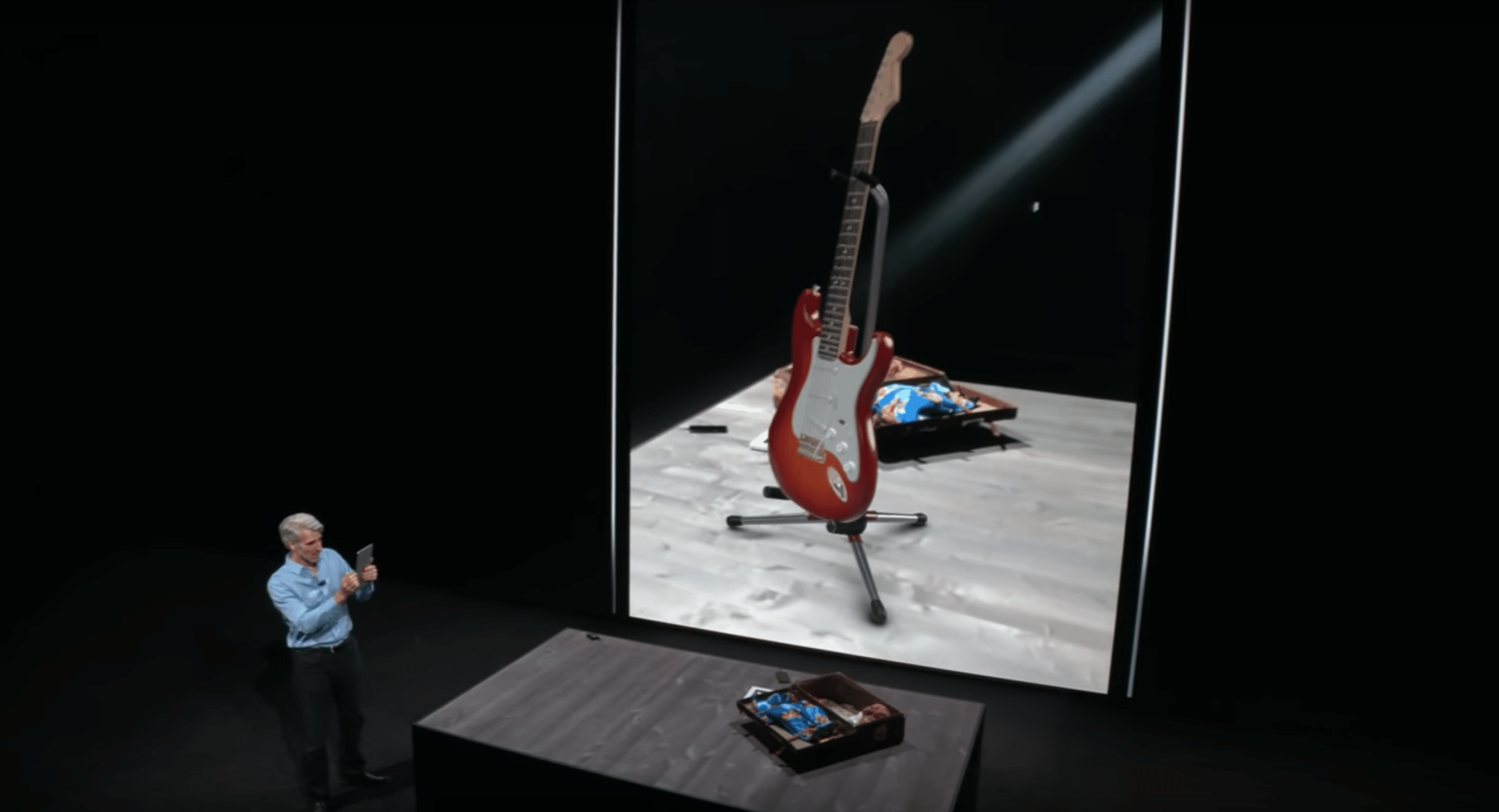
XR Talks is a weekly series that features the best presentations and educational videos from the XR universe. It includes embedded video, as well as narrative analysis and top takeaways.
It’s the season of developer conferences. All the major platforms have been holding annual developer gatherings, including an increasing share of airtime to XR (see Google, Facebook & Microsoft). This week culminated in the O.G. developer conference: Apple’s WWDC (video below).
Among standard Apple fanfare and Kool Aid hand outs, AR got early and substantial treatment. Already one year after ARkit’s launch, this included most notably ARkit 2’s unveiling. Highlights are image persistence, multi-player support, and improved face and object detection.
Multi-player support is perhaps most important on this list, for lots of the reasons we’ve examined. Following Google’s cloud anchors launch, ARkit now supports AR sessions and graphics that can be synced across several users, thus unlocking new social and gaming possibilities
“Probably best is the support for shared experiences,” said Apple’s Craig Federighi from the stage. “This delivers true, multiuser augmented reality. You and the people around you will be able to see your own perspective on a common virtual environment.”

The functionality this unlocks could represent compelling use cases when put into the hands of developers. It’s still open season for the first social killer app, and the stakes are high given mobile AR’s potential market size. We believe it will involve synchronous social and gaming experiences.
Lego for example demo’d an AR game that puts multi-player functionality to work. It’s a Sim City like UX with tabletop 3d graphics that bring static Lego buildings to life. Some combination of live multi-player play, plus networked play with remote players could hit a sweet spot.
On that note, multiplayer functionality isn’t a panacea. The requirement for another player in close proximity could be limiting, compared to place-shifted play (think: words with friends). So greater operability (what AR needs right now) could accommodate nearby and faraway players.
Beyond fun and games are commerce use cases that will depend on developers. To spark ideas, Apple showed an online guitar shopping scenario which flows into 3D product visualizations. One subtle point was its launch from a web experience (ironic for the app-centric Apple).
“So here I am at the Fender website and it can actually let you configure your guitar with the kind of finish and pick guard that you want,” said Federighi. “So I can select a configuration option here, and then I can see the guitar I’ve configured.”

But perhaps most important and overarching of all of its AR-related announcements is a new file format. Known as USDZ, it’s meant to support AR graphics creation with a common language. As we’ve written, unifying technologies will be a key XR accelerant this year.
“It’s a compact, single-file format that’s optimized for sharing while retaining great 3D graphics,” said Federighi. “Now, you can use USDZ across the system from the files app to Safari, even sharing them over messages and mail.”
We’ll again point out the emphasis on web-launched AR experiences. USDZ also has legs, given some of the giants supporting it. Adobe for example will support USDZ so that ARkit graphics can be created and exported right from Creative Cloud apps like Photoshop and Illustrator.
“You’ll be able to bring in images, videos, text, any object from Creative Cloud directly into a native AR environment,” said Abhay Parasnis, EVP and CTO of Adobe. “In fact, for the first time with Creative Cloud and iOS, you’ll have “what you see is what you get” (WYSIWYG) editing in AR.
It’s up for debate whether this new file format actually unifies or further fragments the XR platform landscape. Apple is historically known for the latter. Either way, WYSIWYG functionality will democratize and accelerate developer capability for ARkit, which is most of the market right now.
See the entire AR section of Apple’s keynote below, coded to start at the right point.
For deeper XR data and intelligence, join ARtillry PRO and subscribe to the free ARtillry Weekly newsletter.
Disclosure: ARtillry has no financial stake in the companies mentioned in this post, nor received payment for its production. Disclosure and ethics policy can be seen here.
